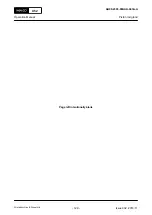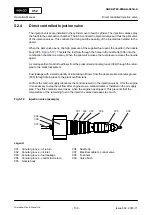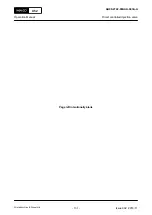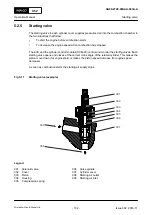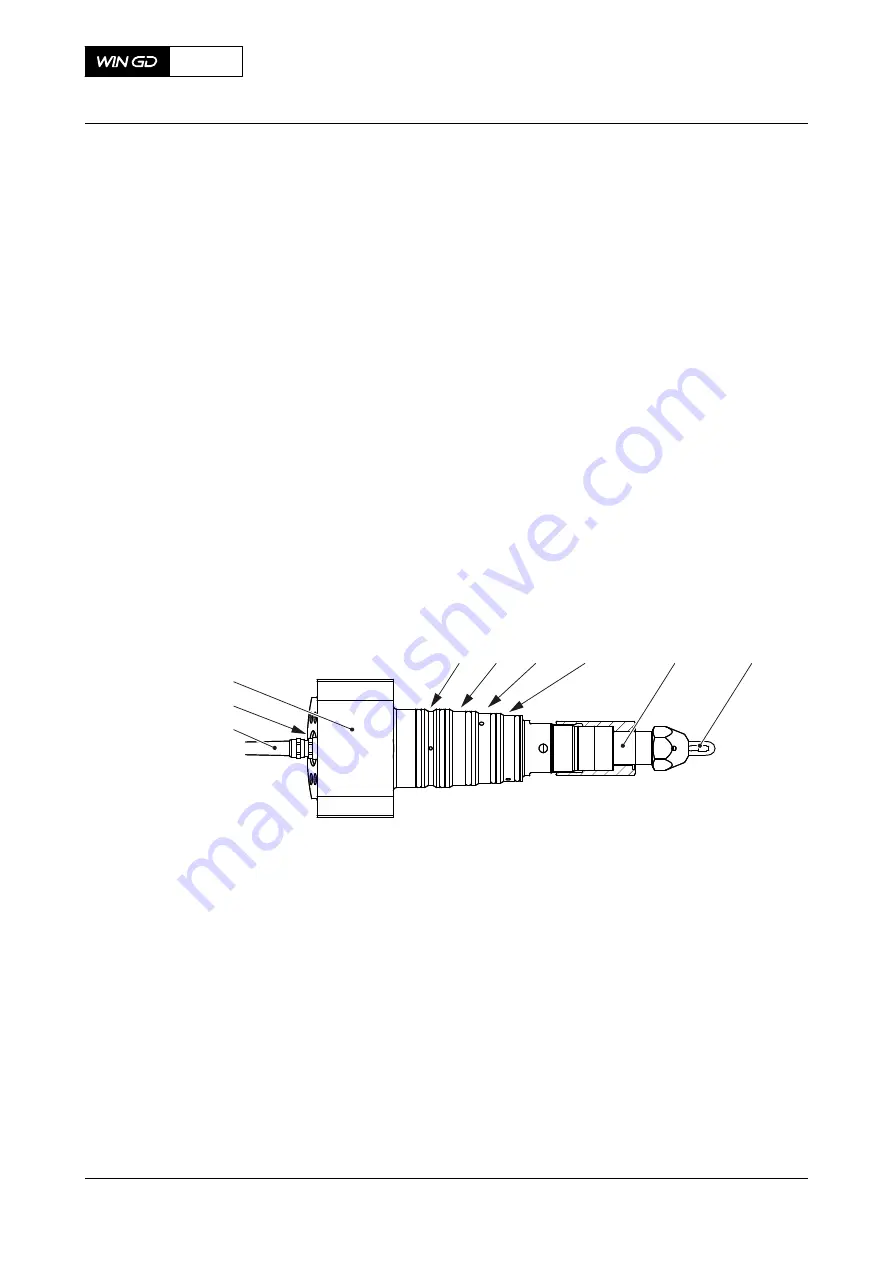
5.2.4
Direct controlled injection valve
The injection valves are installed in the cylinder cover of each cylinder. The injection valves spray
the fuel into the combustion chamber. The ECS controls the solenoid valve and thus the pilot valve
of the injection valves. This controls the timing and the quantity of the injected fuel related to the
power.
When the pilot valve opens, the high pressure of the supplied fuel opens the needle in the nozzle
body (005,
). This lets the fuel flow through the holes in the nozzle tip (006) into the
combustion chamber as a spray. When the pilot valve closes, the fuel pressure closes the needle
again.
A small quantity of control fuel flows from the pressurized annular groove (004) through the return
pipe to the plant fuel system.
Fuel leakage with a small quantity of lubricating oil flows from the depressurized annular groove
(003) through drain pipes to the plant overflow tank.
Oil from the main oil supply lubricates the control element in the injection valves. If for the engine
it is necessary to stop the oil flow after engine stop, a solenoid valve is installed in the oil supply
pipe. Thus this solenoid valve closes, when the engine has stopped. This prevents that the
temperature of the remaining fuel in the injection valves decreases too much.
Fig 5-10
Injection valve (example)
001 002 003
004
006
005
007
009
008
Legend
001
Annular groove - oil return
006
Nozzle tip
002
Annular groove - oil inlet
007
Electrical cable to control valve
003
Annular groove - fuel leakage
008
Fuel inlet
004
Annular groove - control fuel return
009
Valve bush
005
Nozzle body
X52
AA00-2722-00AAA-043A-A
Operation Manual
Direct controlled injection valve
Winterthur Gas & Diesel Ltd.
- 130 -
Issue 002 2018-11














